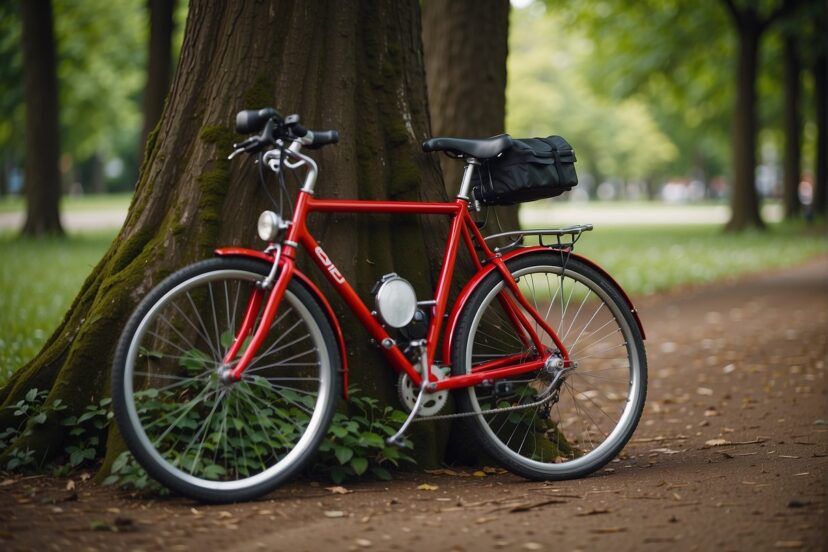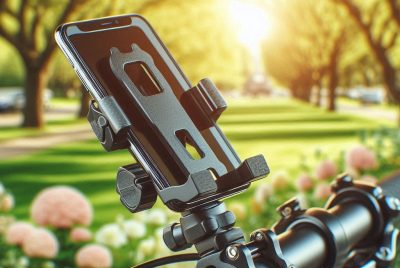Bike Finder: Streamlining Your Search for the Perfect Ride
*We may earn a commission for purchases made using our links. Please see our disclosure to learn more.
Bike Finder Essentials: Choosing the Perfect Cycle for You
In today’s connected world, numerous online tools and resources are designed to streamline the bike selection process. I leverage these tools, complemented by my expertise, to make personalized recommendations. These digital bike finder tools often ask targeted questions to narrow down the vast choices to those that meet specific rider preferences, riding style, and budgetary considerations. I value providing informed and unbiased advice, steering you towards making a decision that optimizes your cycling needs and enhances your riding experience.
Security is another critical aspect that I factor in when discussing cycling. Safeguarding one’s bike against theft is just as important as choosing the right bike. I believe that recommending sturdy locks and secure storage solutions is integral to the cycling experience, ensuring peace of mind for the rider. The right bike finder tool not only guides you to your perfect bike fit but also highlights the importance of protecting your investment.
Understanding Bike Finders

In this section, I’ll take a closer look at the intricacies of Bike Finders, with a focus on their types, functionality, and the technologies they employ.
Types of Bike Finders
My exploration of Bike Finders shows that they typically come in various forms, each suited to different user needs. The most common types of Bike Finders use innovative technologies such as GPS, GSM, and Bluetooth to help locate a stolen or misplaced bike.
GPS-based Bike Finders: These employ satellite technology to provide precise location data, usually viewable on a smartphone app.
GSM-enabled Bike Finders: Utilizing cellular networks, these devices can send location signals even when outside of direct line of sight to satellites. Which is particularly useful in urban environments with many obstructions.
Bluetooth Trackers: Less range than GPS or GSM, but when in proximity, they allow for quick location by emitting signals that a paired device can detect.
How Bike Finders Work
I’ve learned that the operation of Bike Finders is both sophisticated and user-friendly. Upon activation, they typically employ a combination of technologies to monitor the bike’s location.
Activation:
- A Bike Finder is activated usually through a mobile app.
- Upon activation, it starts transmitting signals that can be tracked for the bike’s location.
Location Tracking:
- Most use real-time tracking, meaning I can watch my bike’s journey if it’s been taken.
- In the case of theft, high-frequency location updates become crucial for tracking.
Bike Finder Technologies
The successful function of Bike Finders hinges on the integration of several technologies. The implementation ensures that the devices remain discreet, effective, and versatile for all bike types.
- GPS Technology: Satellite triangulation provides accurate geolocation, essential for tracking over long distances.
- GSM Technology: Supplementing GPS, GSM allows for tracking through cellular signals, which means I can still track my bike even if it’s hidden, for instance, inside a building.
- Bluetooth Technology: Ensures short-range tracking and the capability to easily locate my bike nearby. It’s particularly useful for last-mile location pinpointing.
- Hidden Tracker Design: Many Bike Finders feature a stealthy design, such as integration into the bike’s handlebars, to prevent tampering or removal without specialized tools.
- Flexible Subscription Plans: They often come with several subscription options offering varying levels of service and protection.
- Expansion Mechanism: Ensures a secure fit within the bike, regardless of the handlebar type, to prevent easy theft.
Using these technologies, a Bike Finder offers me peace of mind, knowing that I’m equipped to recover my bike in case of theft. The combination of GPS for long-range tracking and GSM and Bluetooth for redundancy and local triangulation provides a comprehensive security net for my bicycle.
Bike Finder: The Importance of Cycling Security

As a cyclist, I understand that the security of my bicycle is crucial, both in terms of preventing theft and in recovering a stolen bike. Utilizing robust security measures and tracking technology can significantly mitigate these risks.
Preventing Bike Theft
Secure Locking Techniques:
- Use U-locks or heavy-duty chains: These are more resistant to cutting tools.
- Lock both wheels and the frame: Prevents thieves from taking parts of the bike.
- Choose well-lit, public areas: These places are less favorable for thieves.
Environmental Design:
- Accessibility of bike racks: Encourages cyclists to park their bikes securely.
- Visibility: A bike parked in a visible area is less likely to be stolen.
Recovering Stolen Bikes
Registration and Identification:
- Register your bike: Use national or local registries to record your bike’s details.
- Photograph your bike: Keep photos of your bike, including any unique features.
Use of Technology:
- Bike finder apps: Pair these with your tracking device to locate your bike.
- Tracking devices: Install a discreet GPS tracker to trace your bike if stolen.
By combining physical security measures with technological tools such as bike finders and tracking devices, I can reduce the likelihood of theft and increase the chances of recovery.
Choosing the Right Bike Finder

When I select a bike finder tool, I focus on its ability to match me with the perfect bike that suits my cycling needs, factoring in the compatibility, features, and cost.
Compatibility with Bikes
My prime concern with a bike finder is its compatibility range. I ensure it covers various bike types—from mountain bikes, which favor rugged terrain and all-mountain adventures, to road bikes designed for speed and distance on paved surfaces. The tool should also align with specific bike configurations, considering elements like gear ratios for efficient cycling, handlebar shapes for comfort, and rack fitting options for utility.
Feature Comparison
I compare features across different bike finders meticulously. I look for tools that offer detailed filters to narrow down choices based on my preferences such as frame size, wheel size, suspension type, and accessories compatibility. A robust comparison feature is also vital for placing bikes side by side to evaluate their specs against my requirements.
Cost Considerations
Cost is a crucial aspect for me, and I prefer bike finders that allow me to set a price range. This enables me to stay within my budget while comparing various options. Additionally, I consider if the bike finder offers insights on the cost-effectiveness concerning the inclusion of essential gear or if it pinpoints extra expenses for aftermarket accessories.
Setting Up Your Bike Finder

When I approach setting up my Bike Finder, I focus on a seamless installation. Configuring the app for optimal use, and understanding how to interpret notifications for peace of mind.
Installation Process
First, it’s crucial to purchase the BikeFinder tracking device and choose an appropriate subscription plan. Once I have the tracker:
- Open the package: I ensure all components are present.
- Charge the device: I usually give it a full charge before use.
- Attach the tracker: I follow the manual to secure the device on my bike. Typically under the saddle or any recommended area that doesn’t hinder my riding experience.
Configuring the App
After attaching the tracker, it’s time to set up the BikeFinder app.
- Download: I download the BikeFinder app from the App Store or Google Play.
- Create an account: I register using my details to have a personalized experience.
- Subscription: I select my subscription plan within the app to activate the tracker.
- Pair the device: I ensure my phone’s Bluetooth is on and follow the in-app instructions to pair my tracker with the app.
- Customize settings: In the app’s settings, I adjust preferences like units of measurement to align with my needs.
Understanding Notifications
Push notifications are the backbone of the BikeFinder’s utility. Here’s how I make sure I’m informed:
- Enable notifications: In my phone’s settings, I ensure that push notifications for the BikeFinder app are enabled.
- Set alert parameters: Within the app, I define when I want to receive alerts, such as movement or geofence breaches.
- Regular checks: I periodically check the app to ensure connectivity and battery levels are optimal to avoid missing critical notifications.
By adhering to these steps, I ensure that my BikeFinder system is adequately set up to offer the most efficient tracking for my bike’s security.
Bike Finder – Privacy and Data Management

In managing privacy and data, I ensure transparency and compliance with regulatory standards. My approach involves a clear Cookie Policy and avenues for Optional Data Sharing, always keeping the user’s control over their data at the forefront.
Cookie Policy
My Cookie Policy is designed to respect user privacy while also ensuring the functionality of services. I use necessary cookies to maintain the essential features of my website and services. These types of cookies are crucial for users to navigate the site effectively and use its features, such as accessing secure areas.
For analytical cookies, I only deploy them to gather insights into how users interact with my website, which helps me improve user experience. Optional analytics cookies are utilized to provide a more personalized experience and to send relevant information to users. Users in the United States can choose to enable or disable these optional cookies, and this choice is clearly outlined in my Cookie Policy, available in English.
Optional Data Sharing
I recognize the importance of user choice and offer Optional Data Sharing as a means for users to share their data for additional benefits. This can include sharing with trusted third parties for an enhanced experience or sharing anonymized data. Thus to help improve cycling infrastructure and support urban planning efforts. I am adamant that users have a clear understanding of what data is shared, the purpose behind it, and the control they retain to withdraw their consent at any point.
FAQs About Your Bike Finder
In this section, I’ll clarify common inquiries regarding bike finders and related topics, ensuring that you have precise and valuable information for your cycling needs.
1. What are the differences between road cycles and mountain bikes?
Road cycles are designed for speed and efficiency on paved roads, featuring narrow tires and lightweight frames. Mountain bikes, on the other hand, are built with sturdy frames and wide tires suitable for off-road terrain, providing stability and durability.
2. How does a GPS bike tracker function for recovering stolen bikes?
A GPS bike tracker uses satellite technology to pinpoint the precise location of a bicycle. In the case of theft, I can use the tracker’s associated app to locate my bike and provide this information to authorities to aid in its recovery.
3. What are the key features to look for in a specialized bike?
When looking for a specialized bike, I consider the bike’s intended use, frame material, wheel size, suspension, and fit. For example, a carbon fiber frame is ideal for weight-sensitive disciplines like racing.
4. How can I track my bike using a bike finder app?
To track my bike using a bike finder app, I ensure my bicycle is equipped with a compatible GPS tracking device. Once linked to the app, I can monitor my bike’s location in real time through my smartphone.
5. What should I consider when choosing a bike through an online bike finder service?
When using an online bike finder service, I focus on the type of cycling I’ll be doing, my height and riding posture preferences. Also the specific features suitable for my cycling goals, like gear systems for hilly areas.




